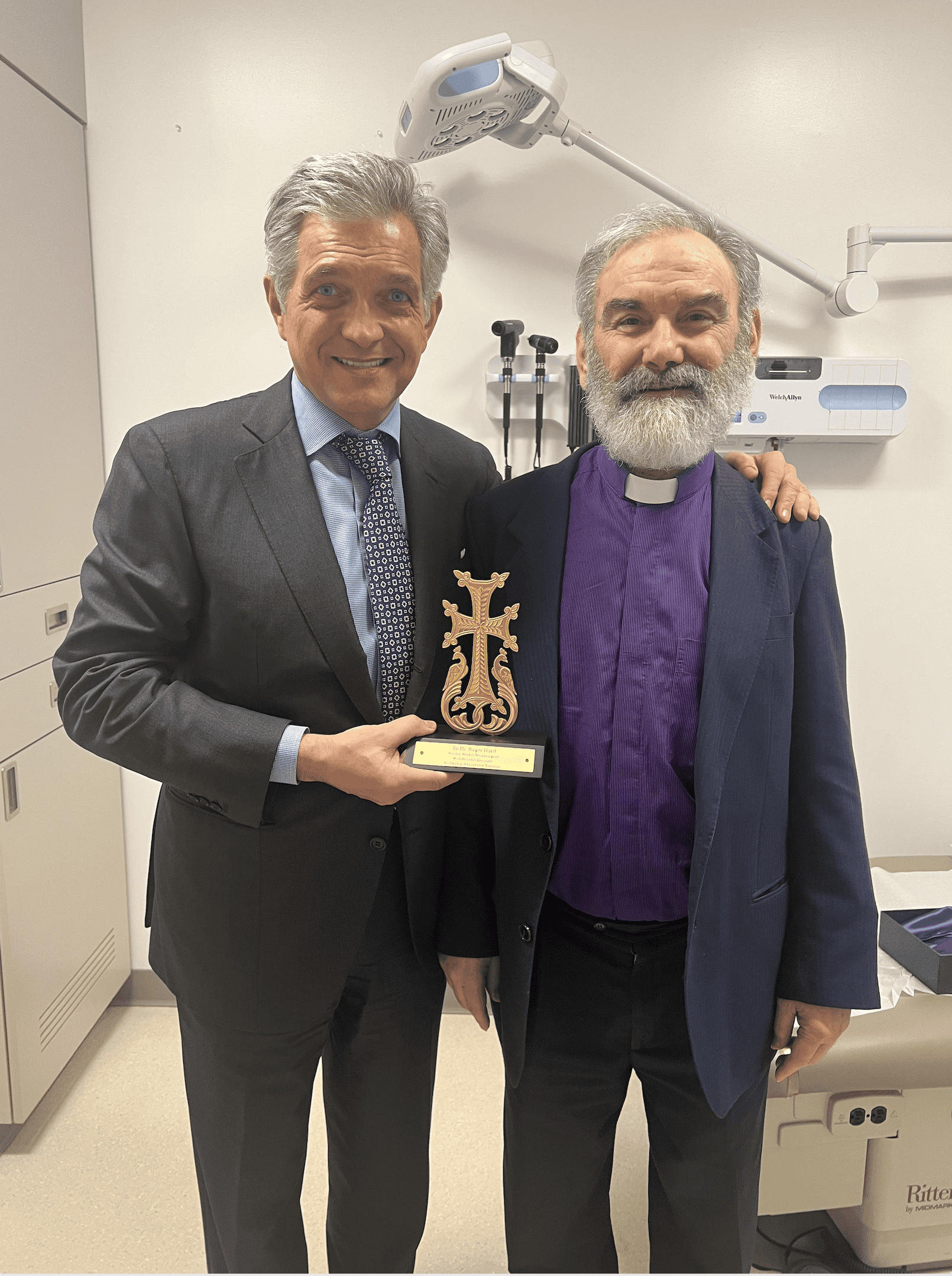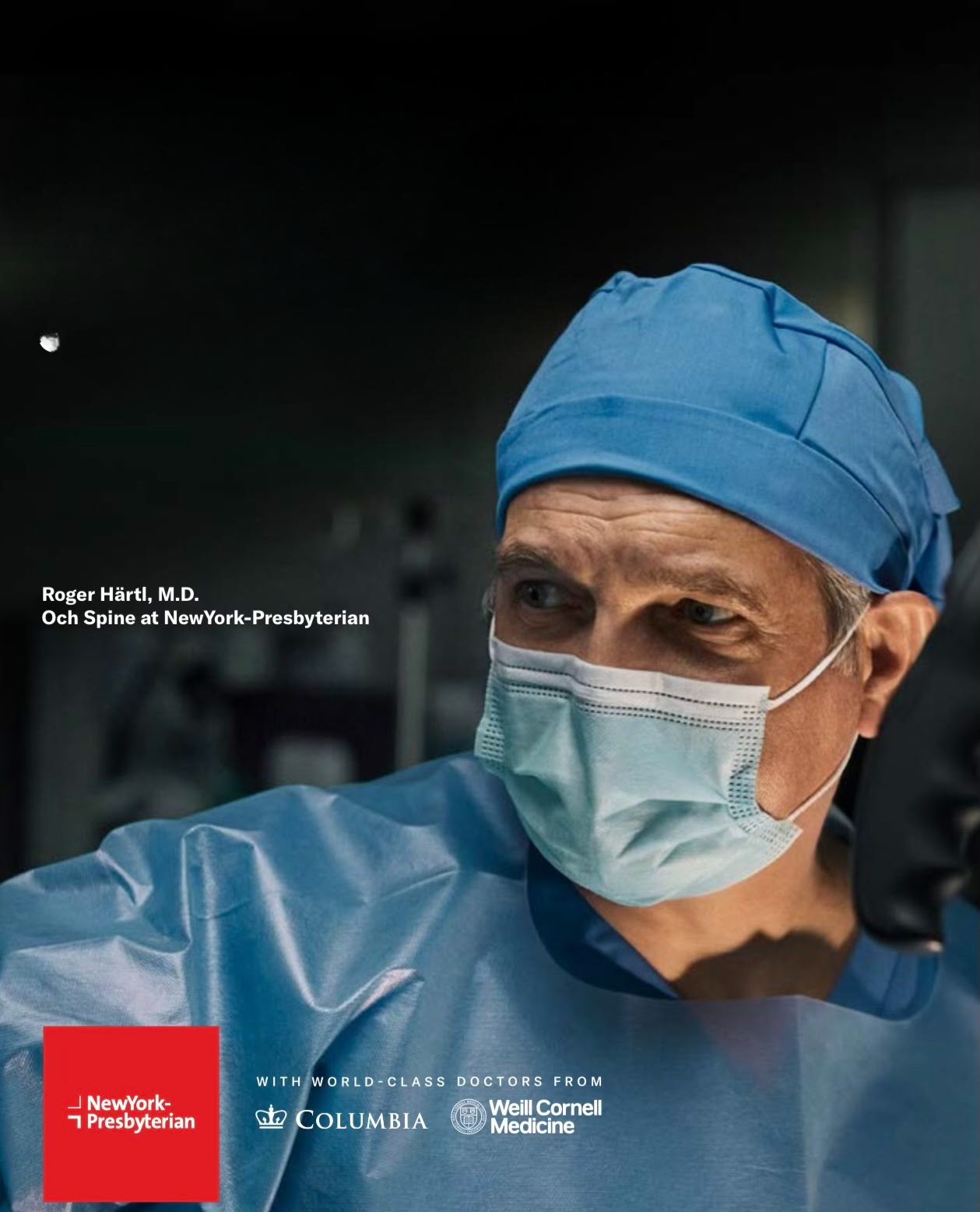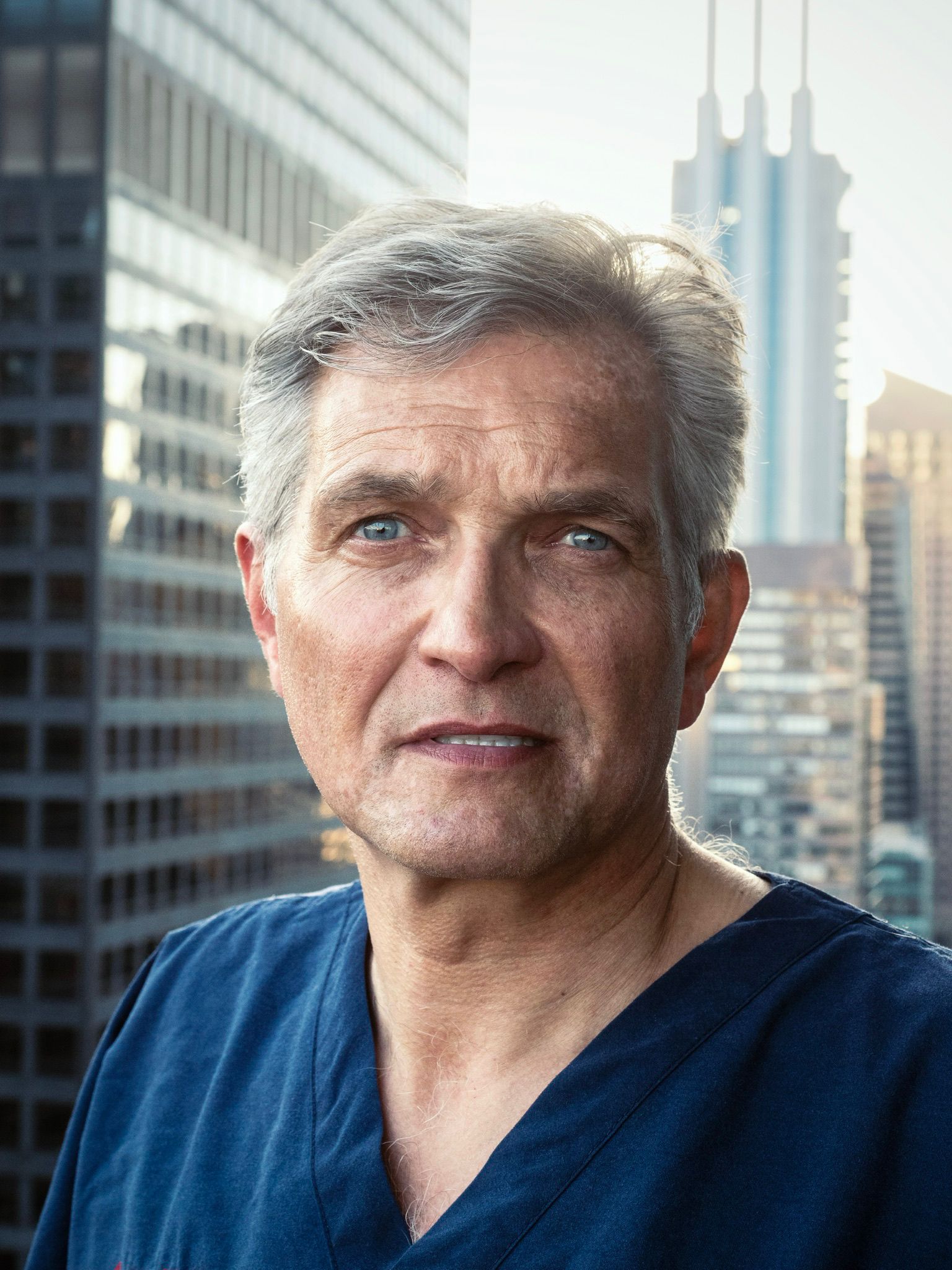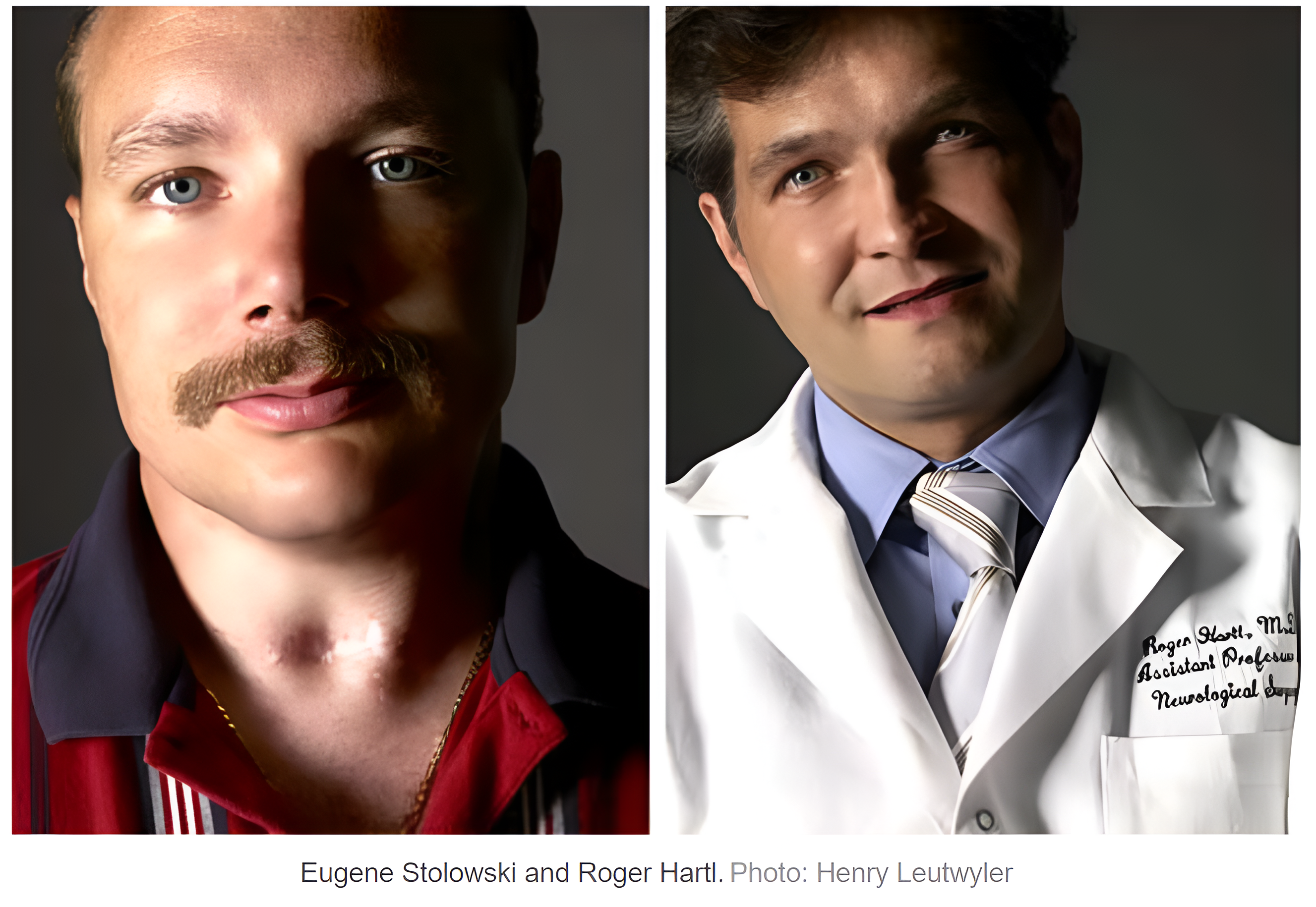News & Podcasts
Explore Dr. Roger Härtl in the news, along with the latest podcasts features.

Expandable Cages Are Not a One-Size-Fits-All Solution for TLIF
Becker’s also covered Dr. Härtl’s comparative study analyzing two different lumbar expandable cage designs in minimally invasive TLIF.
The research showed that cage design heavily influences outcomes, stressing the importance of personalized implant choice.
Read more
Archbishop Anoushavan's Post-Operative Visit
On Tuesday, May 28, during his post-operative visit to Och Spine at New York-Presbyterian at the Weill Cornell Medicine Center for Comprehensive Spine Care, Archbishop Anoushavan had all 20 stitches removed.
During the visit, His Eminence met with his renowned neurosurgeon, Dr. Roger Härtl, who was pleased with the results of the surgery and encouraged the prelate to continue his treatment over the next four weeks, followed by physiotherapy.
As a token of his gratitude, Archbishop Anoushavan presented Dr. Härtl with an Armenian-style cross, which was accepted with great appreciation.
The Prelate continues fulfilling his obligations from home.
Read more
Study Affirms Safety and Effectiveness of Expandable Cages in ACDF
Becker’s Spine Review featured Dr. Roger Härtl’s study on the clinical and radiological results of expandable titanium cages used in ACDF.
The study demonstrates improved ability to correct cervical deformities and highlights the role of expandable technology in personalized spine surgery.
Read more
Stemming the Tide of Disc Degeneration After Microdiscectomy
A world-renowned pioneer and leader in minimally invasive spinal surgery, Roger Härtl, MD, continually pursues research seeking innovative and less invasive surgical and biological treatment strategies for degenerative diseases of the spine. Most recently, Dr. Härtl, Co-Director of Och Spine at NewYork-Presbyterian and Director of the Weill Cornell Medicine's Center for Comprehensive Spine Care, is exploring novel tissue engineering techniques for the repair and regeneration of degenerated spinal discs, the most common cause of back and neck pain.
Read moreOch Spine at NewYork-Presbyterian/The Spiral
A state-of-the-art spine center is now open in The Spiral at Hudson Yards at 504 West 35th Street. This new center brings together spine care specialists from Columbia and Weill Cornell Medicine, and will provide outpatient spine care for children and adults.
See more
New York-Presbyterian Augmented Reality Advances Feature
Dr. Härtl's innovative use of augmented reality in spine surgery is transforming patient outcomes and setting new standards in the field. For nearly 20 years, Roger Härtl, Co-Director of Och Spine at NewYork-Presbyterian and Director of Weill Cornell Medicine’s Center for Comprehensive Spine Care, has used intraoperative imaging and stereotactic navigation in spinal surgery to guide instrumentation placement and tumor resection in minimally invasive spine surgery.
Read moreDr. Orna Guralink's Spine Tumor Story
Dr. Roger Härtl utilized cutting-edge augmented reality technology to precisely remove a spinal tumor, enabling a faster recovery for Orna Guralnik. Her insistence on further investigation led to a life-changing surgery that allowed her to quickly return to her busy life as a renowned therapist and TV host.
Read Story
Medical Marvel - New York Magazine Feature
Dr. Roger Härtl performed a life-saving surgery on firefighter Eugene Stolowski, reconnecting his nearly severed skull to his spine after a devastating fall during the Black Sunday fire. Despite a mere 5% survival chance, Dr. Härtl's expertise led to a miraculous recovery, showcasing his unparalleled skill in neurosurgery.
Read moreKenny Schachter Piece
Kenny Schachter Emerges From Surgery With Dirt on Damien Hirst, Ed Sheeran, and a Lot More In part one of his 'Busted-Disc Diaries,' he recounts blowing out his back moving his art. He's recovering, and just as indefatigable as ever. Thank his art-loving doctors!
After a brief examination by Dr. Roger Härtl—who is nothing short of a magician, a brilliant virtuoso, and the director of spinal surgery at Och Spine at NewYork-Presbyterian/Weill Cornell Medical Center—it was flagrantly clear that I needed surgery, which...
.png)

Online Yoga Classes Prove Helpful for Back Pain
A recent study highlighted by NPR reveals that virtual yoga sessions can significantly alleviate chronic low back pain. Dr. Roger Härtl, neurosurgical director of Och Spine at NewYork-Presbyterian/Weill Cornell Medical Center, who was not involved in the study, commented on the findings, stating, ”I find this very exciting because we have this huge chunk of patients, 95% of patients, where we sometimes don't know what to do.”
Read more